 Call them the poor man's answer to the rubber boots. Centuries ago, farmers chipped out holes in wooden blocks to keep their feet dry. Over the years, the blocks were refined into inexpensive but durable footwear. Today, they're most commonly associated with the history and tradition of the Netherlands. And we are ready to show you how they are made at the factory.
Call them the poor man's answer to the rubber boots. Centuries ago, farmers chipped out holes in wooden blocks to keep their feet dry. Over the years, the blocks were refined into inexpensive but durable footwear. Today, they're most commonly associated with the history and tradition of the Netherlands. And we are ready to show you how they are made at the factory.
How they're made remains as basic as the shoe itself. Most wooden shoes are crafted from poplar – a wood that's easy to carve and generally free of knots, so the wearer won't encounter any splinters. A worker feeds pieces of poplar into a bandsaw, careful to toss any pieces with defects. The blade slices the wood into blocks called “blanks”.
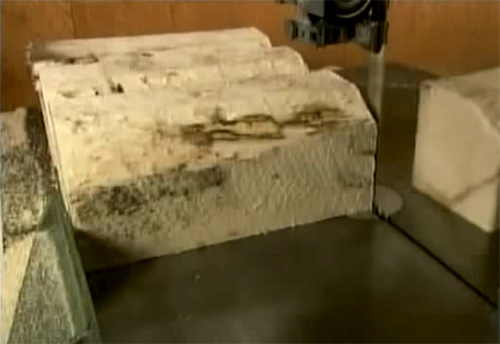
The factory uses vinyl patterns to create the shape of the shoe. There's a pattern for each size of every clog style. A worker locks the pattern into a duplication machine called the “shaper” and then, right next to it, two blanks.
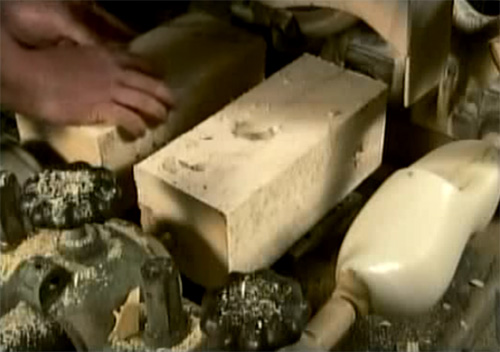
As the tracer moves over the shape of the pattern, the wheel on the left copies its movements exactly, its blade shaving the wood as it moves up and down. There's only one pattern loaded, yet the machine carves out a pair of shoes – that's because the wheel on the far left spins in the opposite direction, so as the blade saws away, it's creating two mirror image copies. That allows the machine to carve out both a right and a left shoe simultaneously.
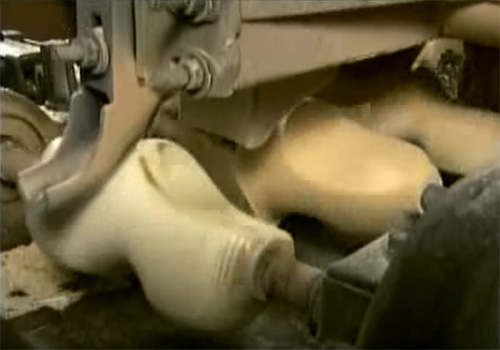
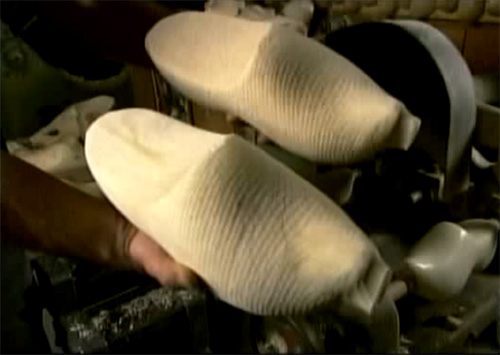
Now, for the instep. A worker positions the blanks onto what's called a “dual action boring machine”. The center rod is called a “tasker” – it's rolling head follows the curves inside the pattern. Spoon bits on either side of it copy the tasker's movements, gradually carving out the inside of the shoes. Now, workers shift the angle so the spoon bits can get in deeper, boring all the way to the front of the shoe. All that carving makes for a lot of wood chips.
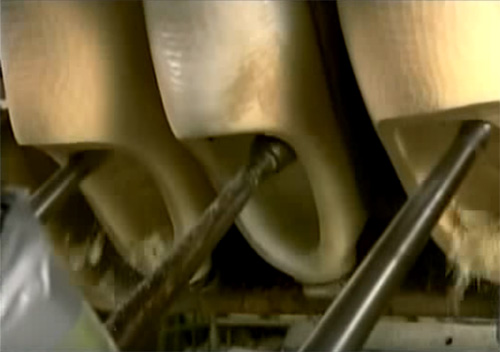
After a drying period, the toe knobs are cut off with a bandsaw and the clogs are inspected for any flaws. A disc sander grinds down the knob on the heel and refines the shape of the toe. The shoemaker uses a barrel sander to smooth out the opening. Then, they switch to a balloon sander – this sander has an air-filled sack inside it that flexes to the shape of the shoe.
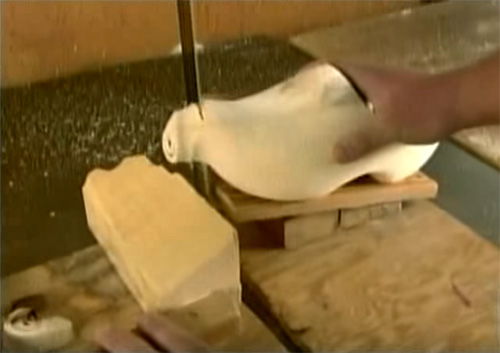
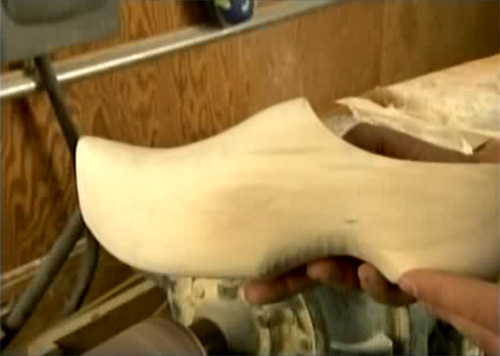
Now, for the final step. An artist lays carbon paper on the shoe and a pattern on top of that. Then, she traces the pattern. The carbon sheet transfers the design to the wood. Now, she goes over the design with a wood burner. She changed tips and buries the temperature according to the size and depth of the line she's burning. This design commemorates Holland, Holland Michigan that is.
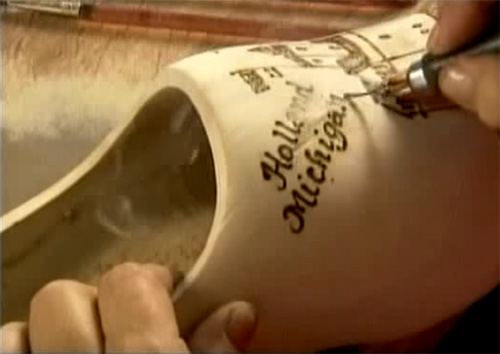
The artist now uses water-based paints to enhance the scene with color. She applies three coats of a water-based varnish to preserve the artwork and help keep the shoes clean.
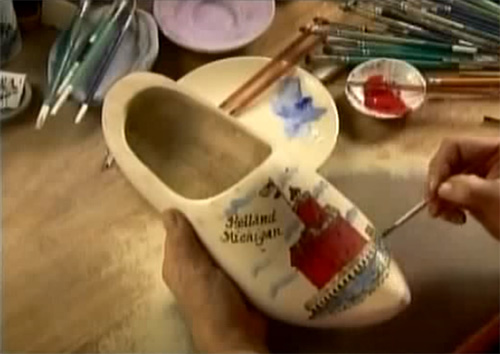
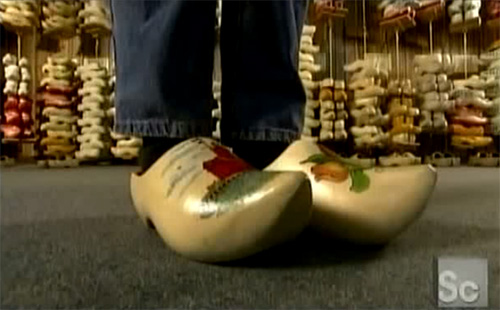
While most clog-wearing farmers opt for a plainer version, true clogoholics appreciate a little possess. But they'll leave crafting the clogs to the experts.
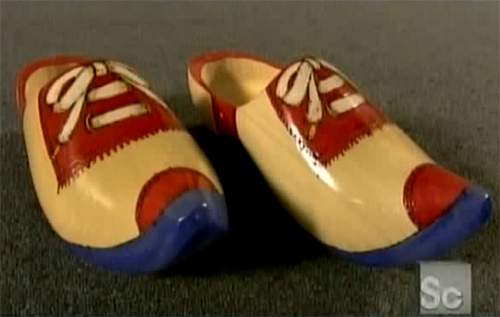
(c)


